Research Article | DOI: https://doi.org/10.58489/2836-2306/005
Catatonia: A Rare Manifestation of Autism
Advisor in Pediatrics and Pediatric Psychiatry
Children Teaching Hospital of Baghdad Medical City
*Corresponding Author: Aamir Jalal Al-Mosawi
Citation: Aamir Jalal Al-Mosawi (2022). Catatonia: A rare manifestation of autism. International Journal of Genetics and Genomic Science .1(1). DOI:10.58489/2836-2306/005
Copyright: © 2022 Aamir Jalal Al-Mosawi, this is an open access article distributed under the Creative Commons Attribution License, which permits unrestricted use, distribution, and reproduction in any medium, provided the original work is properly cited.
Received: 23 August 2022 | Accepted: 09 September 2022 | Published: 29 November 2022
Keywords: Catatonia, autism, cerebrolysin.
Abstract
Background: Autism disorders which are also known pervasive developmental disorders as are very complex and heterogeneous group of chronic disorders that marked by early impairment in socialization, communication, and behavior. Catatonia has rarely been reported in association with autism disorder.
Patients and methods: The father of a ten-year-old boy with autism was particularly concerned about an abnormal behavior the boy was showing during the previous weeks. The boy was taking an abnormal position for variable time, sometimes more that 20 minutes, and associated with some repetitive movements, and was not responding to external stimuli.
Results: A ten-year-old boy who was first observed on the fifth of November, 2021 because his father complained his son had poor communication with his parents, and was poorly responding to his name. The boy's language was not good, and he had some repetitive movements. The abnormal communication prevented the child from learning like normal children. At the age of ten his adaptive skills were considered acceptable. The diagnosis of typical autism without significant mental retardation was made. The occurrence of a mild form of catatonia was documented.
Conclusion: In this paper, the rare occurrence of a mild form of catatonia in association with typical autism disorder is reported, and a therapeutic approach is suggested.
Introduction
Autism disorders which are also known pervasive developmental disorders as are very complex and heterogeneous group of chronic disorders that marked by early impairment in socialization, communication, and behavior. Autism disorders were first recognized by Grunya Efimovna Sukhareva (Figure-1A), a Soviet pediatric psychiatrist in 1925, and she called these disorders autistic psychopathy.
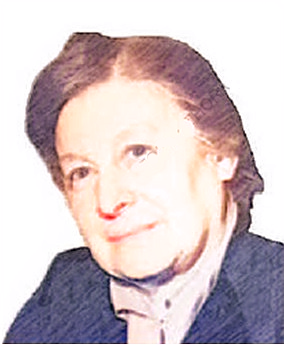
The characteristic and diagnostic manifestations of autism disorders result from impairments in social interaction and communication. The impaired social interaction causes the two major diagnostic features of autism which are the lack of eye contact, and the lack of appropriate responsiveness to own name. Difficulties in using and understanding language are an important feature of autism disorders. Repetitive body movements or behavior patterns including hand flapping, foot tapping, and spinning are commonly associated with autism disorders.
The Autistic disorder which is called classical autism was first described by Leo Kanner (Figure-1B) in 1943. The diagnostic feature of this type is normal or high intelligence.
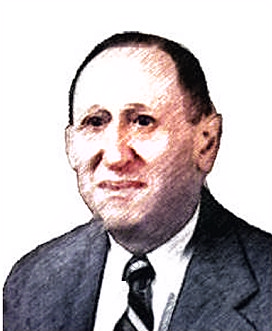
<!-- /* Font Definitions */ @font-face {font-family:"Cambria Math"; panose-1:2 4 5 3 5 4 6 3 2 4; mso-font-charset:0; mso-generic-font-family:roman; mso-font-pitch:variable; mso-font-signature:-536869121 1107305727 33554432 0 415 0;} /* Style Definitions */ p.MsoNormal, li.MsoNormal, div.MsoNormal {mso-style-unhide:no; mso-style-qformat:yes; mso-style-parent:""; margin:0in; mso-pagination:widow-orphan; font-size:12.0pt; font-family:"Times New Roman",serif; mso-fareast-font-family:"Times New Roman";} .MsoChpDefault {mso-style-type:export-only; mso-default-props:yes; font-size:10.0pt; mso-ansi-font-size:10.0pt; mso-bidi-font-size:10.0pt;} @page WordSection1 {size:8.5in 11.0in; margin:1.0in 1.0in 1.0in 1.0in; mso-header-margin:.5in; mso-footer-margin:.5in; mso-paper-source:0;} div.WordSection1 {page:WordSection1;} -->
Children with Autism disorder who have subnormal intelligence, but without significant mental retardation are considered to have typical autism. The absence of significant mental retardation in such children is suggested by having acceptable adaptive behaviors including eating with spoon, bowel control and going to bathroom. In children with typical autism disorder, the serious lack of communication skills per se is expected to prevent or delay the acquisition of developmental mile stones.
Asperger syndrome was first described by Grunya Efimovna Sukhareva, and later by Hans Asperger (Figure-1C) in 1944 [1-7].
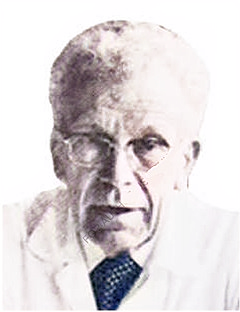
Catatonia has rarely been reported in association with autism disorder [8].
Patients and methods
The father of a ten-year-old boy with autism was particularly concerned about an abnormal behavior the boy was showing during the previous weeks. The boy was taking an abnormal position for variable time, sometimes more that 20 minutes, and associated with some repetitive movements, and was not responding to external stimuli.
Results
A ten-year-old boy who was first observed on the fifth of November, 2021 because his father, complained that although his son had poor communication with his parents, and was poorly responding to his name. The boy's language was not good, and he had some repetitive movement. The abnormal communication prevented the child from learning like normal children. However, at the age of ten, he had a relatively good vocabulary, and knows the numbers from 1 to 100, but he was unable to do simple mathematics like adding and subtracting. His mother taught him to write some words like “Father”. At the age of ten his adaptive skills were acceptable as he could go to toilet alone and wash his hands. He was eating with spoon when his mother asked him to eat with spoon, but in many times, he was eating foods like rice with his hands. The diagnosis of typical autism without significant mental retardation was made.
The boy was taking an abnormal position for variable time, sometimes more that 20 minutes, and associated with some repetitive movements, and was not responding to external stimuli (Figure-2).
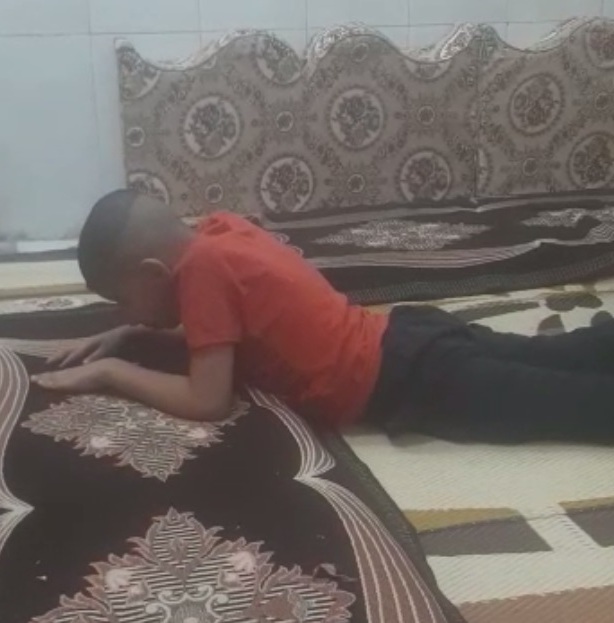
The boy was initially treated based on our extensive published experiences with treatment of autism disorders. We recommended an initial therapeutic course which included cerebrolysin 5ml ampoule given intramuscularly every other day during the morning hours (Not necessarily on the same time) [15 doses per month] [9-15].
Discussion
Catatonia is a complex behavioral condition associated with a variety of neuropsychiatric disorders including schizophrenia and mood disorders.
Karl Ludwig Kahlbaum (Figure-3) was the first to use the term catatonia to describe the condition.
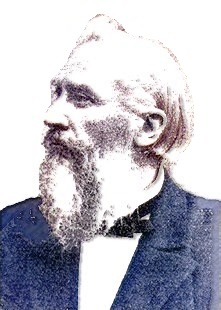
It was recognized as early as 1874, and it is dominated by motor dysfunction associated with immobility in an abnormal position occurring in association with abnormal movements and behaviors, and withdrawal. Catatonia can be an acute or subtle and symptoms can change during attacks [8, 16, 17].
Zaw et al (1999) reported the successful treatment of a 14-year-old autistic boy with a severe form of catatonia associated with stupor, with a course of electroconvulsive therapy after failure of treatment with intravenous injection of sodium amytal [18].
Fink and colleagues (2006) suggested the use of high dose lorazepam for the treatment of catatonia in autism disorders before considering electroconvulsive therapy [19].
Bozkurt and Mukaddes (2010) reported the successful treatment of catatonia with lorazepam in an 11-year-old child who had autism disorder with no significant language impairment (Asperger syndrome) [20].
Ellul and colleagues (2015) reported the successful treatment of catatonia with amantadine in a patient with autism disorder [21].
This patient was initially treated with courses of intramuscular cerebrolysin based on our extensive published experiences with treatment of autism disorders [9-15]. The use of lorazepam and amantadine was considered but not recommended initially.
Cerebrolysin, a safe parenteral mixture of aminoacids which has been used with a benefit in a variety of childhood neuropsychiatric disorders, is the only medical therapy that is known to be associated with significant improvement and even cure of the major autistic features (Poor response to name and poor eye contact which indicate impaired communication) [9-15].
Conclusion
In this paper, the rare occurrence of a mild form of catatonia in association with typical autism disorder is reported, and a therapeutic approach is suggested.
Acknowledgement
Some if the figures in this paper were included in previous author's publications, but the author has their copyrights.
Conflict of interest
None.
References
- Al-Mosawi AJ. (2018), Asperger syndrome and regressive autism.1st ed., Saarbrücken; LAP Lambert Academic Publishing: (ISBN: 978-613-9-82643-8).
View at Publisher | View at Google Scholar - Al-Mosawi AJ. (2018), A new therapeutic approach for pervasive developmental disorders. 1st ed., Saarbrücken; LAP Lambert Academic Publishing: (ISBN: 978-3-659-86602-9).
View at Publisher | View at Google Scholar - Al-Mosawi AJ. (2018), Pediatric psychiatry: An accredited training course. 1st ed., Saarbrücken; LAP Lambert Academic Publishing: (ISBN: 978-613-9-86510-9
View at Publisher | View at Google Scholar - Al-Mosawi AJ. (2019), The pattern of pervasive developmental disorders in Iraqi children.1st ed., Saarbrücken; LAP Lambert Academic Publishing: (ISBN: 978-3-330-05029-7).
View at Publisher | View at Google Scholar - Al-Mosawi AJ. (2021), autism disorders in Iraq. Scholars' Press: (ISBN-13: 978-613-8-94973-2, ISBN-10: 6138949730).
View at Publisher | View at Google Scholar - Al-Mosawi AJ. (2020), autism disorders: Cure is possible. 1st ed., Saarbrücken; LAP Lambert Academic Publishing, Saarbrücken; Germany, (ISBN-13:978-620-2-66617-6, ISBN-10: 620266617X).
View at Publisher | View at Google Scholar - Al-Mosawi AJ. (2021), An introduction to child psychiatry: A training course. Scholars’ Press: (ISBN-13: 978-613-8-94954-1, ISBN-10: 6138949544).
View at Publisher | View at Google Scholar - Wing L, Shah A. (2000), Catatonia in autistic spectrum disorders. Br J Psychiatry Apr; 176:357-62. Doi: 10.1192/bjp.176.4.357.
View at Publisher | View at Google Scholar - Al-Mosawi AJ. (2019), The use of cerebrolysin and citicoline in autism and Asperger syndrome. Journal of Bio Innovation (e-ISSN 2277-8330) January; 8(1): 99-108.
View at Publisher | View at Google Scholar - Al-Mosawi AJ. (2019), Pervasive developmental disorders in Iraqi children. Journal of Psychiatry Research Reviews & Reports Sep 11; 1(1): 1-8. Doi: 10.5281/zenodo. 4007395
View at Publisher | View at Google Scholar - Al-Mosawi AJ. (2020), Clinical uses of Cerebrolysin in Pediatric Neuropsychiatry. Science World Journal of Pharmaceutical Sciences February 5; 1(1): 1-4. Doi: 10.5281/ zenodo.3878485
View at Publisher | View at Google Scholar - Al-Mosawi AJ. (2020), Our experience with childhood pervasive developmental disorders (Autism and Asperger Syndrome): Cure is Possible. EC Clinical and Medical Case Reports March 03; 3(4): 01-08. Doi: 10.5281/zenodo.3892198
View at Publisher | View at Google Scholar - Al-Mosawi AJ. (2020), Cure of Autistic Disorders: Mission Impossible is Possible in an Illustrated Pioneering Experience. Archives of Health Science (ISSN 2641-7456) 4(1):1-26. 4(1):1-26. Doi: 10.31829/2641-7456/ahs -4 (1)-113
View at Publisher | View at Google Scholar - Al-Mosawi AJ. (2021), Atypical Autism Associated with Elevated Gonadotrophin and Precious Puberty: A Very Rare Association or a New Clinical Syndrome? Biomedical Journal of Scientific & Technical Research (ISSN: 2574 -1241) Jan, 21; 33(2): 256 86-25689. Doi: 10.26717/BJSTR.2021.33.005377
View at Publisher | View at Google Scholar - Al-Mosawi AJ. (2021), A Novel Therapeutic Approach for Treating Rett Syndrome. EC Clinical and medical case reports March 01; 4(3): 1-9. Doi: 10.5281/zenodo.45686 52
View at Publisher | View at Google Scholar - Kahlbaum KL. (1973), In: Die Katatonie oder das Spannungsirresein: eine klinische Form psychischer Krankheit. Kahlbaum K, translator. Berlin: Verlag August Hirshwald; 1874. Catatonia. Baltimore: Johns Hopkins University Press.
View at Publisher | View at Google Scholar - Fink M. (2009), Catatonia: a syndrome appears, disappears, and is rediscovered. Can J Psychiatry Jul; 54(7):437-45. Doi: 10.1177/070674370905400704
View at Publisher | View at Google Scholar - Zaw FK, Bates GD, Murali V, Bentham P. Catatonia, autism, and ECT. (1999), Dev Med Child Neurol Dec; 41(12):843-5. Doi: 10.1017/s001216229900167x.
View at Publisher | View at Google Scholar - Fink M, Taylor MA, Ghaziuddin N. (2006), Catatonia in autistic spectrum disorders: a medical treatment algorithm. Int Rev Neurobiol, 72:233-44. Doi: 10.1016/S0074-7742(05) 72014-6
View at Publisher | View at Google Scholar - Bozkurt H, Mukaddes NM. (2010), Catatonia in a child with autistic disorder. Turk J Pediatr Jul-Aug; 52(4):435-8.
View at Publisher | View at Google Scholar - Ellul P, Rotgé JY, Choucha W. (2015), Resistant Catatonia in a high-functioning autism spectrum disorder patient successfully treated with amantadine. J Child Adolesc Psychopharmacol Nov; 25(9):726. Doi: 10.1089/cap.2015.0064
View at Publisher | View at Google Scholar